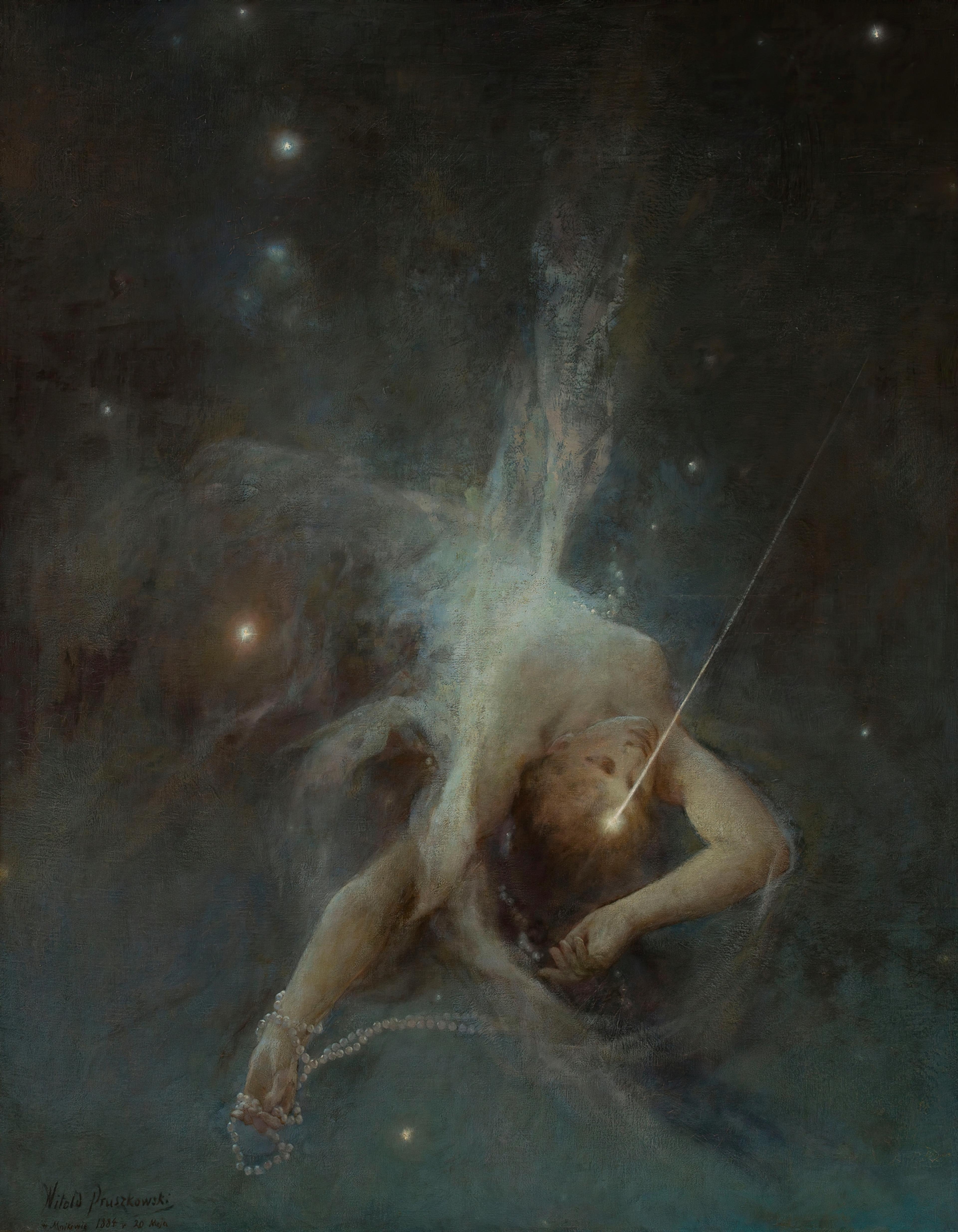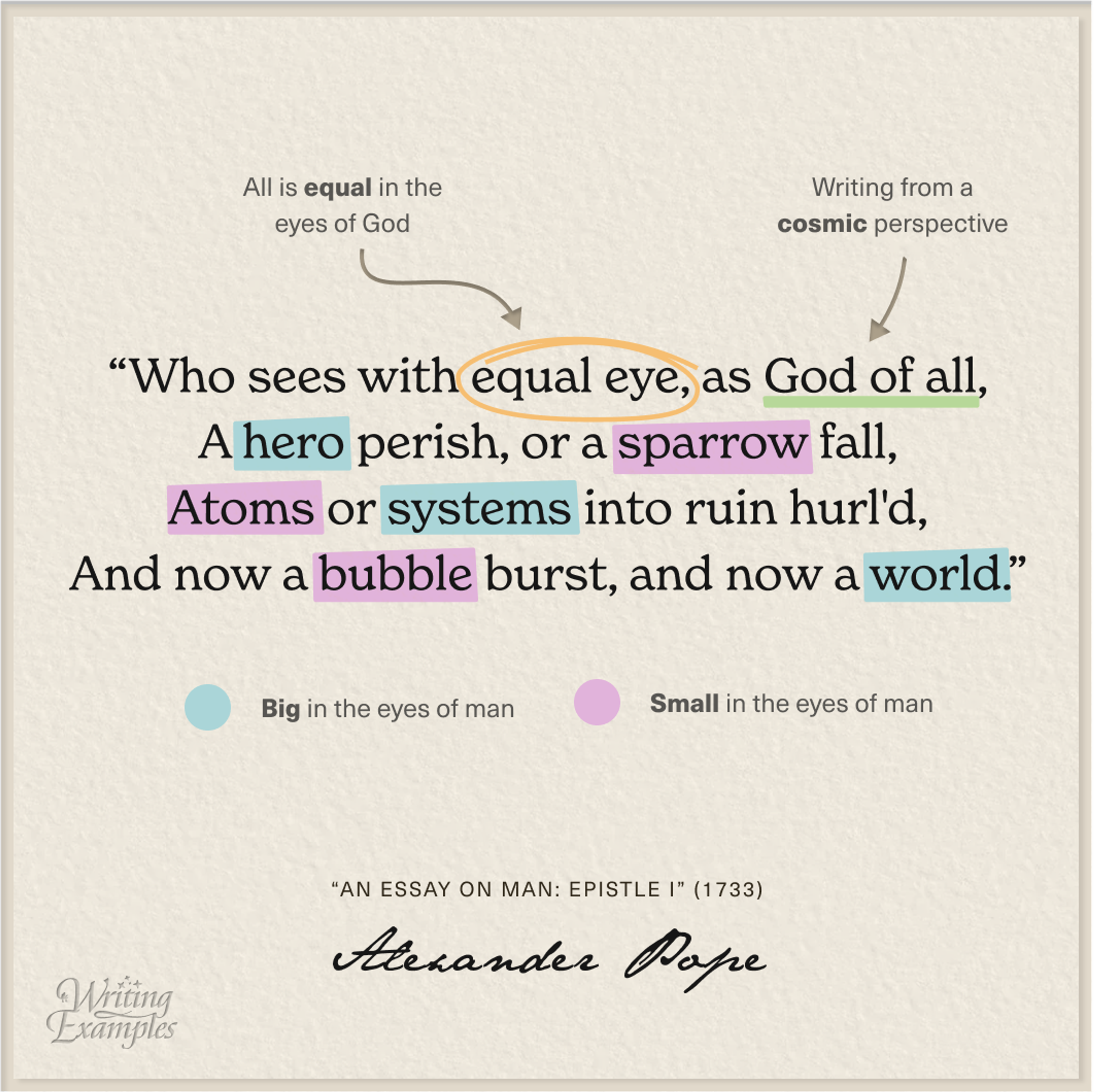HOW TO
Describe theInfinite
By
Sherry Ning


o show the perspective of God, compare something enormous to something tiny (like the hero and the sparrow in this example, or the collapse of systems and the bursting of a bubble). From the cosmic perspective, these things are the same. The human understanding of scale dissolves; all things are equal in the all-seeing, all-knowing, all-encompassing divine eye.
This technique works because it redefines importance: we may value what feels big — courage, sacrifice, empires — while dismissing what feels small. But to God, everything carries the same weight. The mightiness of divine perception lies in its ability to see without hierarchy or preference.
You can juxtapose the grand with the infinitesimal any time you want to reveal a sense of overwhelming awe — from the scale of nature, history, or even human emotions. Want to convey the vastness of the ocean? Compare the tides shaping continents to the ripples in a puddle. Want to write about time? Compare a millisecond to eons.
By collapsing the distinctions between big and small, this technique creates a feel of marvel at the grandiosity of the universe. When describing divine perception, make your reader rethink the scale of things and see the hidden connections between the extremes.
Read More
Write like the Greats
New Writing Examples, right in your inbox.
“Beautiful, playful, and high-quality. Kudos.”
Clayton
from Missouri, USA



